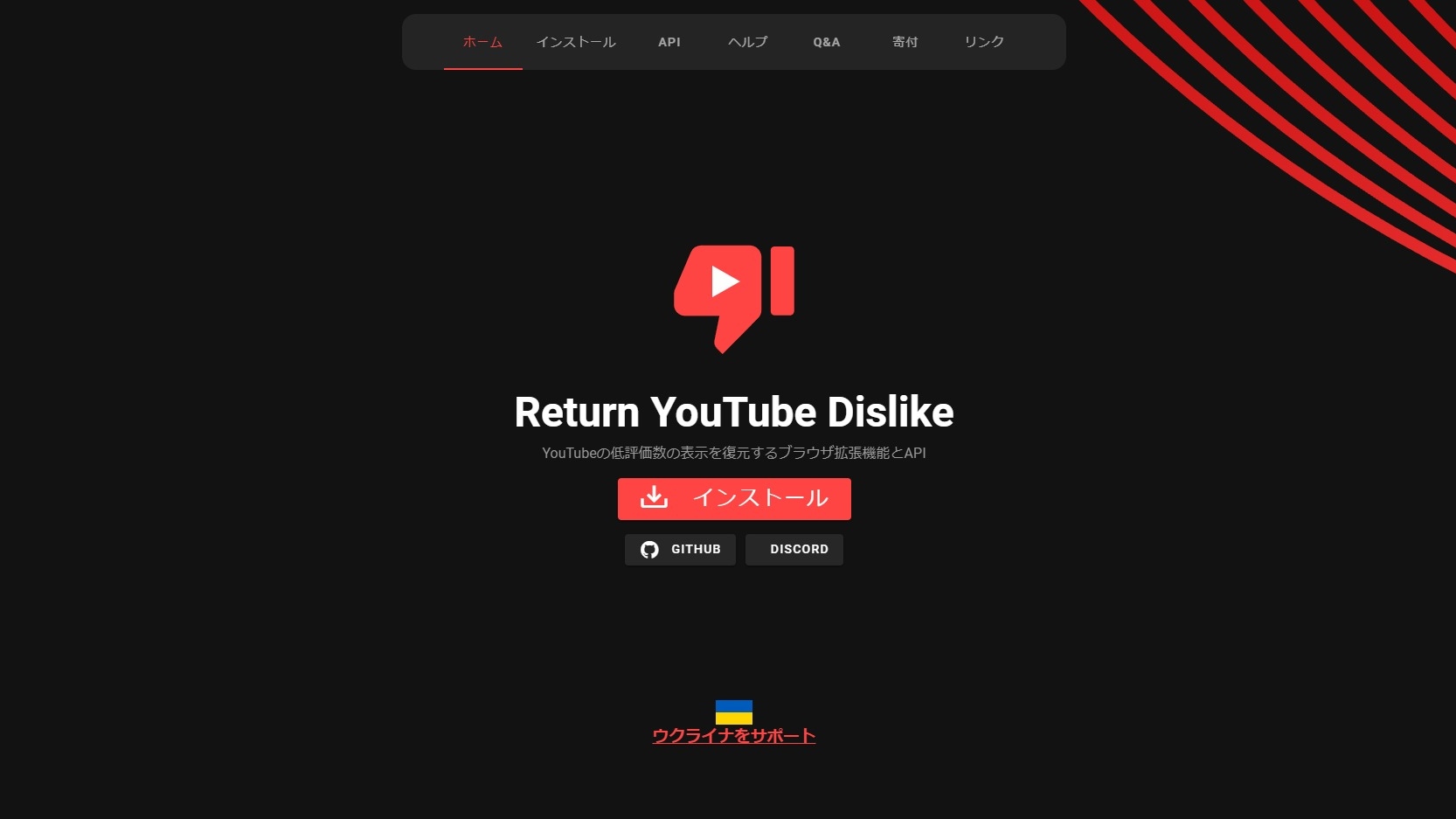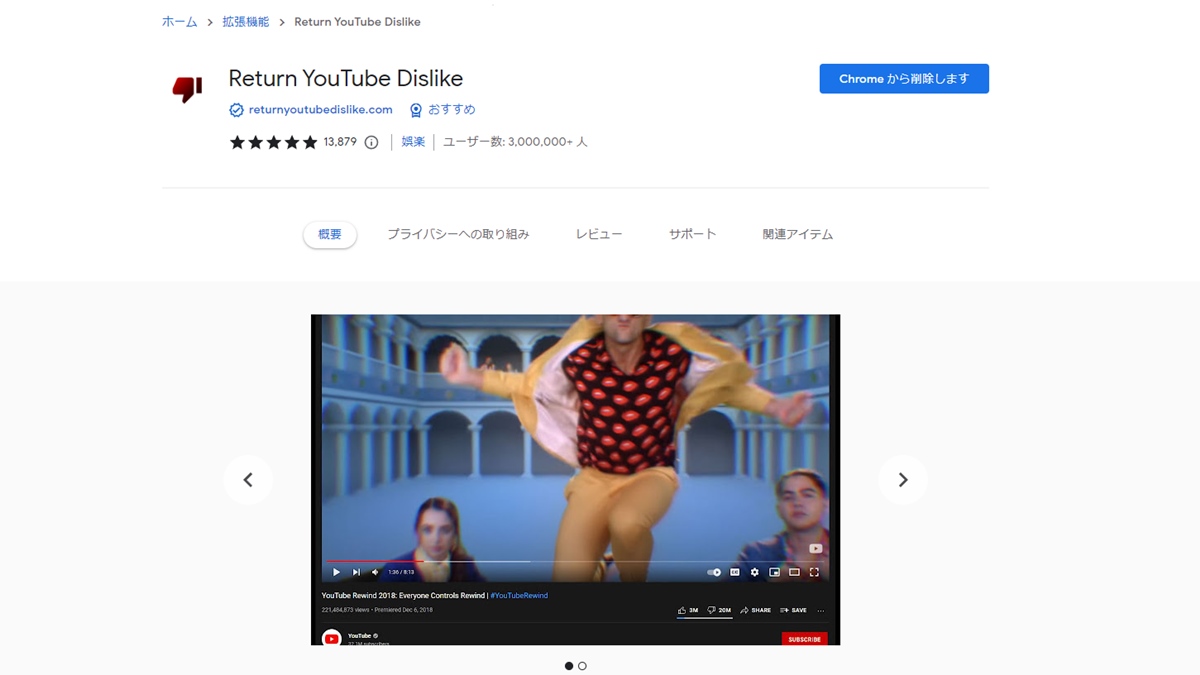The Return YouTube Dislike browser extension returns wildly inaccurate numbers in some cases

YouTube stopped displaying dislikes on videos in 2021. Since then, viewers of a video have only been able to see the like count, with dislikes only being available for the poster of the video. With this change came the appearance of the Return YouTube Dislike browser extension, a third-party tool that makes dislikes viewable again. However, there are cases where the number of dislikes shown by the tool are wildly inaccurate when compared to the real numbers.
Return YouTube Dislike is being developed as an open source project. Once added to a browser, the tool will estimate the number of dislikes when a user opens a YouTube video. The extension works in not just Google Chrome, but Firefox, Edge, Opera, and Brave as well.
On the Chrome Web Store, Return YouTube Dislike is approaching 14,000 reviews and currently has a 5 out of 5 star rating. It has even surpassed over 3 million users. It may be because there’s a demand for users who want to see dislikes on YouTube, but the extension has proven itself to be very popular.
However, there are cases where the estimated number of dislikes calculated by RYD deviate greatly from the actual numbers. I (the original author of this article) first noticed this when looking at the data for the YouTube channel that’s operated by the Japanese edition of AUTOMATON.
For the below Harvestella video on the AUTOMATON YouTube channel, RYD shows 700 dislikes on the video as of this writing. This is similar to the number of likes which gives the impression the reception for the video is mixed. But the estimated number of dislikes is much different than the actual number.
Revealing the actual number of dislikes could potentially brush up against YouTube’s terms of service, so we will refrain from doing that here, but the actual number doesn’t even reach 10% of what RYD displays. This isn’t just a slight miscalculation; it potentially changes the impression of the video itself.
Additionally, there are also cases where the actual number of dislikes for a video on the channel are 5 times higher than what RYD estimates. Sometimes it’s too high and sometimes it’s too low.
One reason for the inaccurate numbers is the method RYD uses to calculate dislikes. According to the extension’s FAQ, the below formula is used for videos that were uploaded after YouTube stopped displaying dislikes.

To start, this formula uses the like to dislike ratio for RYD users. It then multiplies this dislike ratio by the Public Like Count. There’s a problem, though. The crux of the data is based only on data from RYD users, so there’s a high potential for dislikes to be amplified.
For example, let’s say a video has 1,000 likes and 100 dislikes. In an extreme case, if RYD users have rated the video with 100 likes and 100 dislikes, RYD users will see 1,000 likes and 1,000 dislikes, which is way off from the actual numbers. This is what I believe is happening with the above Harvestella video.
To see if this phenomenon was occurring on other channels, we checked with PLAYISM, the publishing brand of Active Gaming Media which also operates AUTOMATON. Their channel also had an instance where RYD showed a dislike count that was nearly 20 times more than the actual number.
Of course, there are also videos where RYD displays numbers that are generally in line with the actual data. However, when considering how the extension works, these could have just been a coincidence or cases where a lot of RYD users rated a video.

Furthermore, the Japanese edition of AUTOMATON has posted an article based on RYD data before (related article, in Japanese). In this case, there was a lot of data to go from, so it’s probably a fairly accurate approximation, but as explained in this article, there is reason to doubt the accuracy of RYD’s numbers. For this reason, we are making it a policy to not use RYD’s numbers as a source going forward (an explanation about the accuracy of RYD’s estimations has been added to the above article).
We also want to point out that the developers behind RYD state that it isn’t 100% accurate. The nature of the tool is that the more people there are that use it, the more accurate it becomes. To start, it’s probably important for users to understand that the numbers given by the extension aren’t precise.
It would be nice if YouTube had a way for channel operators to display dislikes like before if they want to. For the Japanese edition of AUTOMATON’s YouTube channel, we would prefer to display accurate information to viewers, even if there are dislikes.
Written by. Nick Mosier based on the original Japanese article (original article’s publication date: 2023-01-24 19:46 JST)




